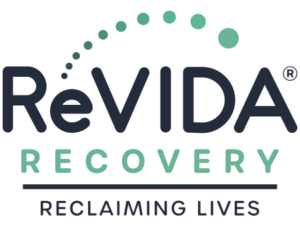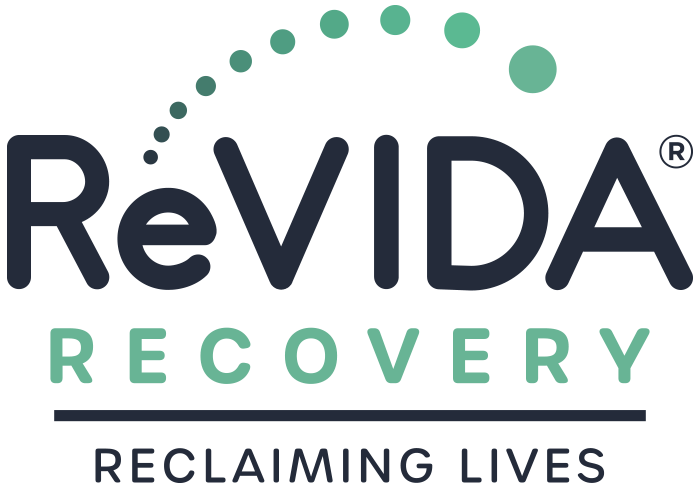
The ache in your chest is that of grief, knowing your loved one has seemed to choose Percocet® (oxycodone/acetaminophen) over their family. You thought you saw the signs, but in the end, you were unaware of how serious the situation was.
You are not alone.
The prescription opioid dispensing rate in Scott County was 140.4 per 100 people in 2022. This was significantly higher than the state of Virginia, which was 34.1 per 100. This is only one of many counties here in Southwest Virginia with higher rates than the state.
The ease of access to opioids like Percocet® (oxycodone/acetaminophen) throughout Appalachia has always been a concern here at ReVIDA® Recovery. We work to bring education to our communities on these topics, helping loved ones understand where addiction stems from. Today, we are discussing the signs of Percocet® (oxycodone/acetaminophen) addiction, and how loved ones can provide support.
Table of Contents
Understanding the Signs of Percocet® (Oxycodone/Acetaminophen) Addiction
Percocet® (oxycodone/acetaminophen) is a prescription painkiller that combines the opioid oxycodone with the over-the-counter pain reliever acetaminophen. It is only available legally from a medical doctor. However, many take Percocet® (oxycodone/acetaminophen) illicitly, which can lead to the development of a Percocet® (oxycodone/acetaminophen) use disorder. Let’s take a look at the different signs to look out for as Percocet® (oxycodone/acetaminophen) addiction can affect the body and mind.
Physical Indicators of Percocet® (Oxycodone/Acetaminophen) Use Disorder
The physical side effects of Percocet® (oxycodone/acetaminophen) can range from mild to severe and will affect everyone differently depending on their opioid tolerance. Some initial side effects include:
- Problems with balance and coordination
- Fatigue
- Sleep problems
- Constipation
- Trouble with memory
The physical signs that Percocet® (oxycodone/acetaminophen) has developed into a disorder will involve more exacerbated physical changes. These can include:
- Dramatic weight changes
- Lethargy
- Stomach problems including possible bowel obstructions
- Decrease in sexual desire (libido)
- Lack of hygiene habits
As Percocet® (oxycodone/acetaminophen) use disorder progresses, the person essentially stops taking care of themselves and focuses on continued use, no matter the negative effects it may cause.
Another physical sign of Percocet® (oxycodone/acetaminophen) use disorder is experiencing withdrawal between doses. Withdrawal is a set of uncomfortable symptoms that occur as the body metabolizes Percocet® (oxycodone/acetaminophen). They begin between 8 and 24 hours after the last dose in someone who has consumed the substance for a decent period of time. Sweating, nausea, muscle tension, and flu-like symptoms will occur, peaking in intensity after 72 hours if no more Percocet® (oxycodone/acetaminophen) is taken.
Psychological Reg Flags of Percocet® (Oxycodone/Acetaminophen) Use Disorder
Percocet® (oxycodone/acetaminophen) use disorder can cause changes in mood and other psychological symptoms. One sign is noticing the person gets agitated easily. This typically occurs as the effects of Percocet® (oxycodone/acetaminophen) first begin to wear off and the “good” feelings begin to end. The agitation can progress if they know they don’t have a readily available next dose, which can turn to intense feelings of anxiety as withdrawal sets in.
Another psychological sign is seeing an increase in depression. As the person becomes dependent on Percocet® (oxycodone/acetaminophen), the brain no longer naturally produces the chemicals that make the person feel pleasure. This results in an increase in depression, especially between doses.
Behavioral Concerns of Percocet® (Oxycodone/Acetaminophen) Use Disorder
Percocet® (oxycodone/acetaminophen) use disorder affects behaviors due to the changes it makes in the brain. One way this happens is by reducing inhibitions. Inhibitions are ways our brains work to protect us from potentially harmful or embarrassing situations. An example is refusing to sing karaoke for fear that people will judge the person. Percocet® (oxycodone/acetaminophen) lowers inhibitions, causing a rise in reckless behaviors. These can include having sex with multiple partners, cheating on their partner, driving while under the influence, or mixing substances. Because Percocet® (oxycodone/acetaminophen) affects memory, the person may not remember the events that took place.
Other behavioral signs include isolating and hiding. The person may cut off family and friends to continue their use without judgment. Hobbies may become a thing of the past. They may lie, steal, and hide from family to keep taking Percocet® (oxycodone/acetaminophen) discreetly. However, these behaviors go far beyond just wanting to take Percocet® (oxycodone/acetaminophen).

Drug-Seeking Behavior Defined: What Is Really Going On in the Brain?
Drug-seeking behavior is an outdated and derogatory phrase as it depicts the person as someone who will act essentially crazy to get their substance of choice. Yes, substances do cause behavioral changes – Percocet® (oxycodone/acetaminophen) being no different – but the science behind why is much more complex.
The way opioid use disorders work is by changing the brain from taking a substance to feel good to now needing the substance despite the harm it causes. Opioids like Percocet® (oxycodone/acetaminophen) tell the brain to release endorphins which activate the reward center. Endorphins also inhibit pain, which is why Percocet® (oxycodone/acetaminophen) is prescribed for moderate to severe pain cases. When these effects wear off, the person wants to feel them again, taking more and more Percocet® (oxycodone/acetaminophen) over time.
This cycle begins a Percocet® (oxycodone/acetaminophen) use disorder. The brain will stop making endorphins naturally, making Percocet® (oxycodone/acetaminophen) and other opioids the only way the person feels good. Their behaviors will change to accommodate taking these substances. They may lie or steal from loved ones to keep their use going. They may skip work or important functions to take more Percocet® (oxycodone/acetaminophen). These behaviors are not driven by “drug-seeking” – the person’s brain has changed to the point nothing makes them feel good. They are seeking refuge from the negative feelings, not chasing substances.
How to Help a Loved One Living With a Percocet® (Oxycodone/Acetaminophen) Use Disorder
It is devastating to watch a loved one lose themselves to a Percocet® (oxycodone/acetaminophen) use disorder. If you are noticing the signs, now is the time to step in and offer some help. Tips we have for loved ones include:
Show empathy: Many believe it is easier to show tough love when it comes to a loved one with opioid use disorder. While in some cases this works, there is a risk of pushing the person too far which can result in an overdose due to such poor mental health. Showing empathy and listening can help your loved one see they are supported and cared for, giving you the opportunity to discuss seeking treatment options.
Learn about opioids: Being prepared with knowledge will help you better understand what your loved one is going through. They didn’t take Percocet® (oxycodone/acetaminophen) and develop a disorder overnight, and understanding what is happening in their brain and body can give you insight into approaching the situation.
Set boundaries and avoid enabling: It can be tough to put your foot down when dealing with your loved one, but protecting yourself is a necessity. Though it is okay to show empathy, enabling consists of aiding in your loved one’s use. This can include giving money, rides, or a place to stay that allows them to continue taking Percocet® (oxycodone/acetaminophen). Setting boundaries to avoid enabling includes only allowing them over when they are not using and not providing any financial help. Your life is important too, and boundaries can help keep you protected.
Include a third party: Talking to an outside party can help give you peace of mind and allow you to seek some compassion for yourself. A therapist or addiction specialist can help you understand how Percocet® (oxycodone/acetaminophen) use disorder in your loved one is not your fault and provide you with the resources you need to heal.

Percocet® (Oxycodone/Acetaminophen) Use Disorder Treatment Options in Virginia
Seeing the signs of Percocet® (oxycodone/acetaminophen) use disorder can leave you wondering – what can I do? How can I help? There is hope and help available for you and your loved one to begin the healing journey. Percocet® (oxycodone/acetaminophen) addiction treatment will give your loved one a safe environment to experience therapies and learn about opioids and recovery. Family therapy sessions will take place, allowing you to express your feelings to your loved one with the guidance of a licensed therapist. It’s not too late, your loved one can begin anew today.
If you have a loved one managing a Percocet® (oxycodone/acetaminophen) use disorder, help is available today. ReVIDA® Recovery offers a full-spectrum program including medication-assisted treatment and outpatient therapy that involves families. With facilities throughout Virginia and Tennessee, we ensure all patients have access to care. Call us today at 423-631-0432 to learn more about our program offerings.
Reclaim your life.








